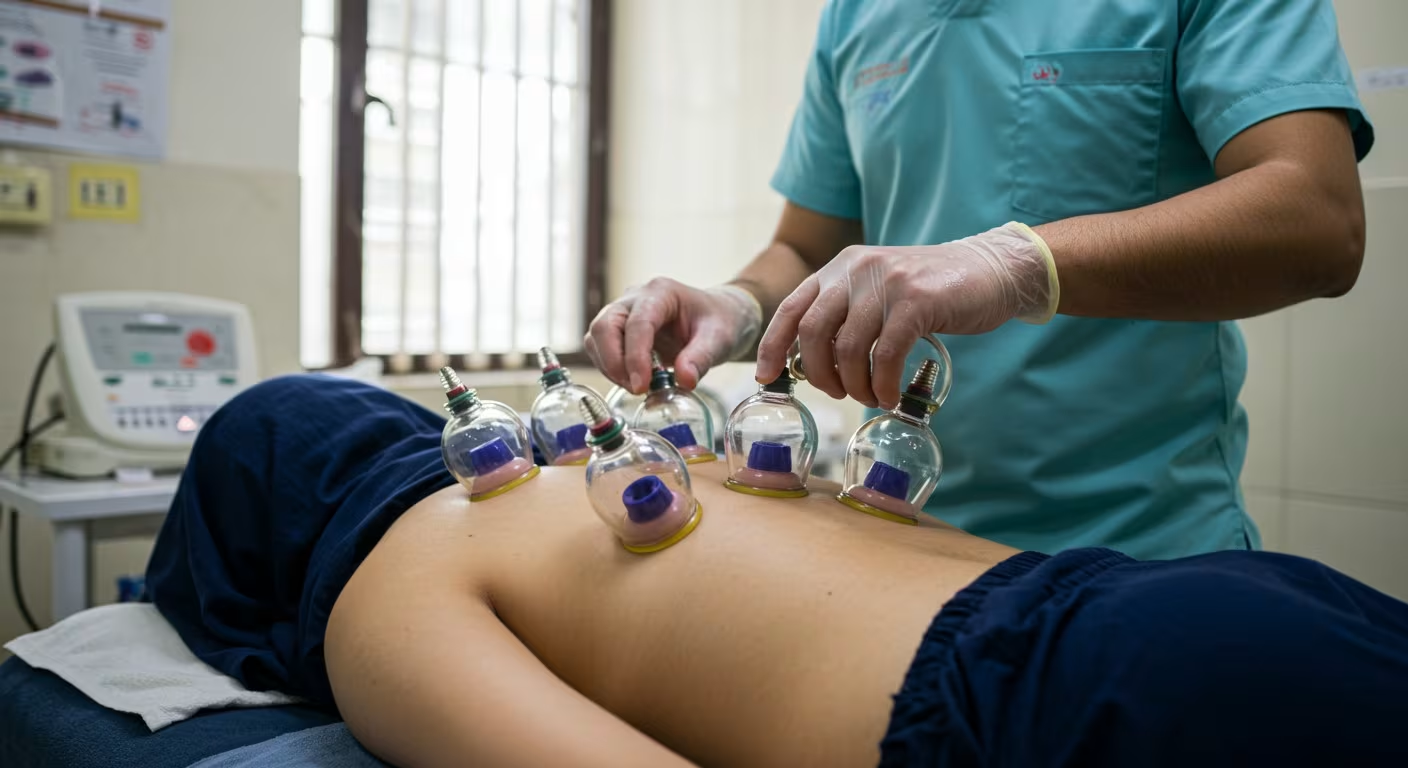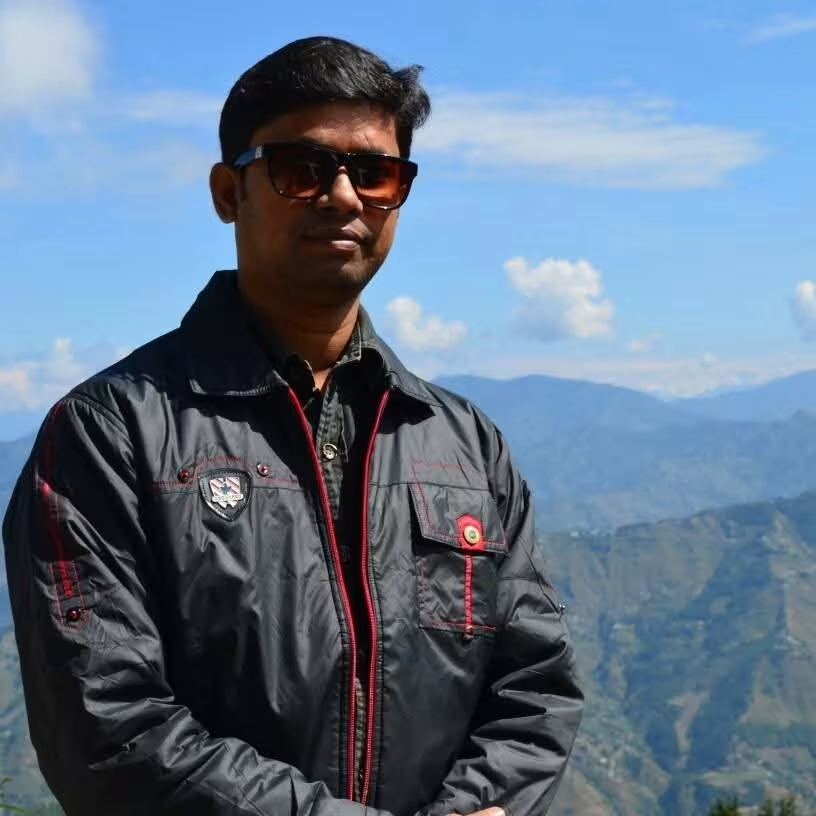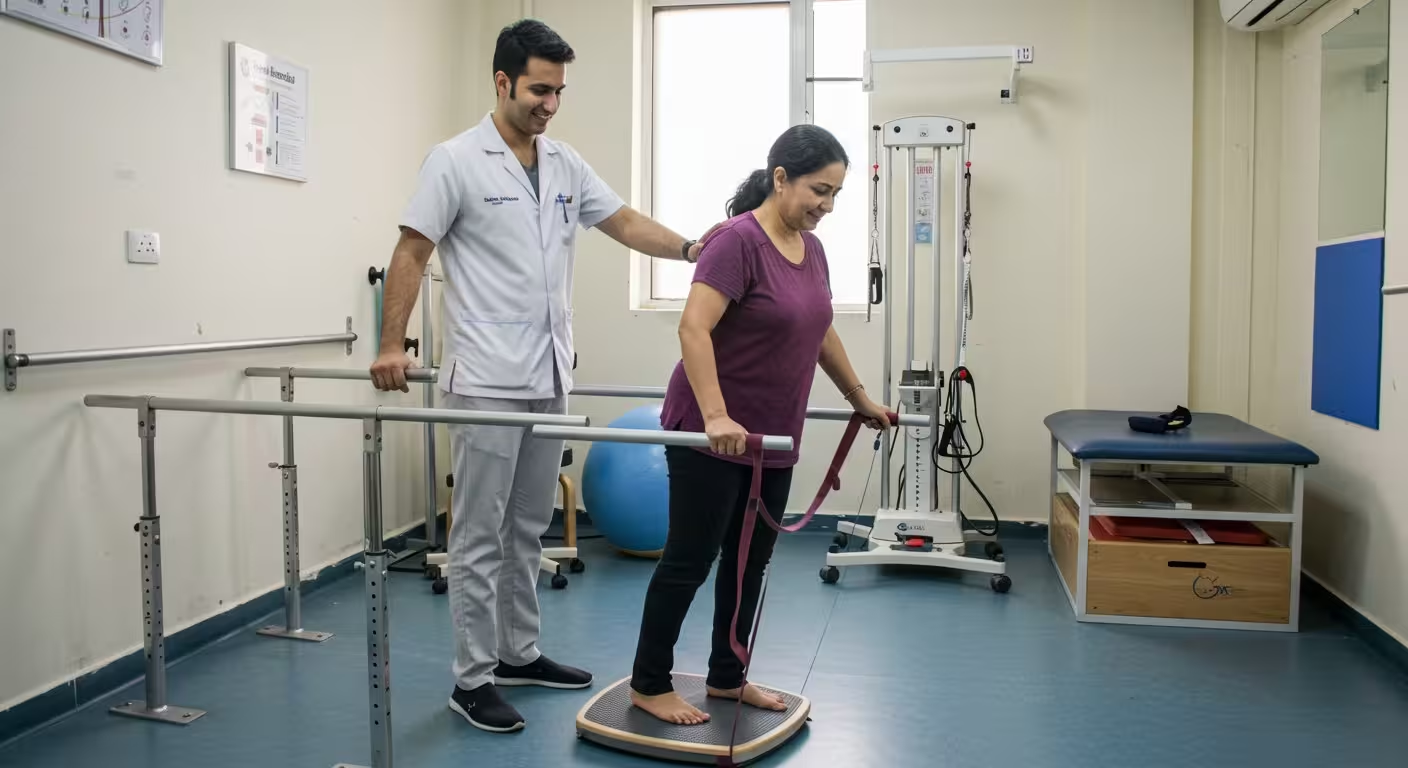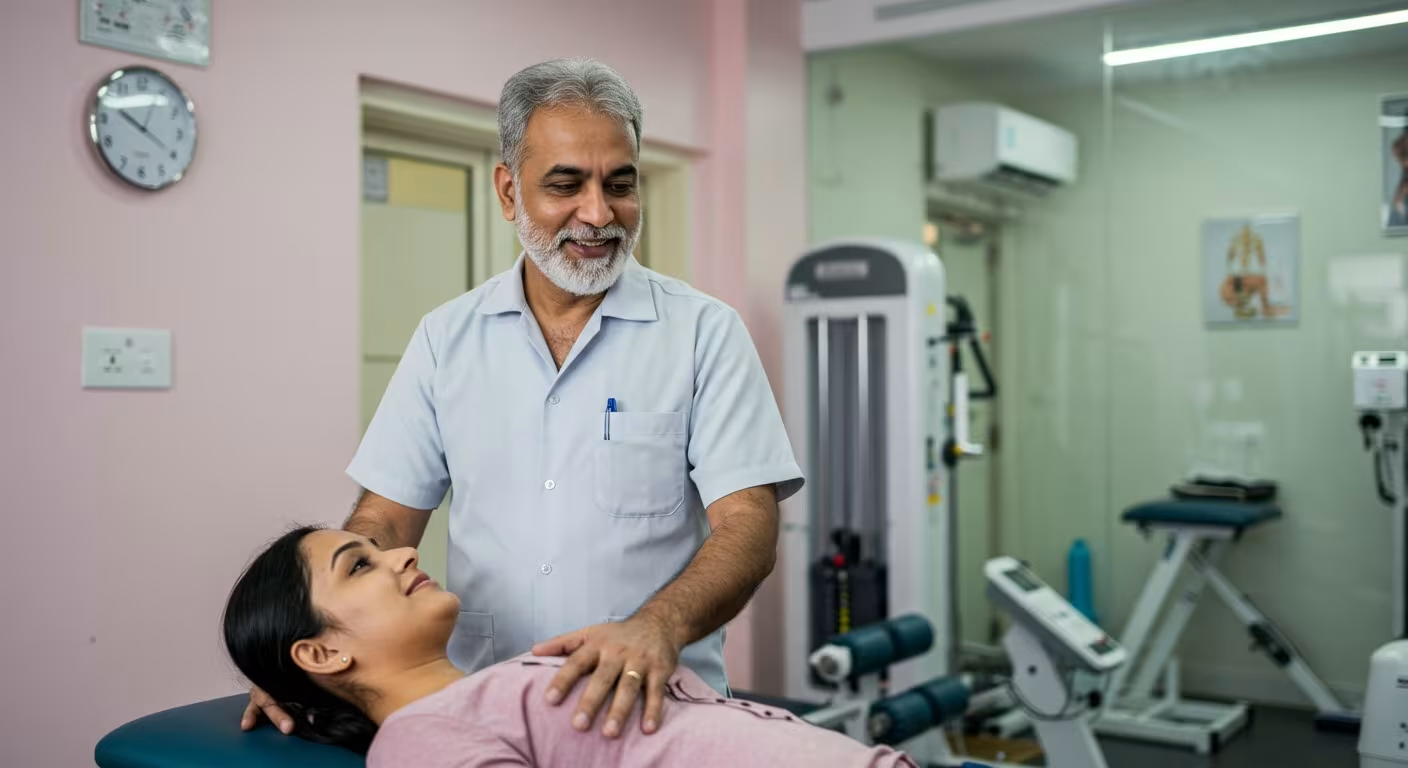Introduction to Hijama/Cupping Therapy
Hijama, also known as cupping therapy, is an ancient healing practice that has been gaining significant popularity in Kolkata over the past decade. This traditional treatment involves placing specialized cups on the skin to create suction, which is believed to mobilize blood flow, promote healing, and restore balance to the body's vital energy.
For residents of Kolkata seeking natural and holistic approaches to health and wellness, Hijama offers a time-tested alternative that complements modern medical treatments. The growing number of Hijama centers in Kolkata reflects the increasing interest in this therapeutic practice among locals looking for relief from various ailments.
"Hijama has been practiced for thousands of years across diverse cultures. In recent years, Kolkata has embraced this ancient therapy, with practitioners blending traditional methods with modern understanding of physiology for optimal results."
This comprehensive guide explores everything Kolkata residents need to know about Hijama therapy – from its scientific basis and benefits to finding reputable centers and understanding pricing across the city. Whether you're considering your first session or looking to deepen your knowledge of this therapeutic practice, this guide provides valuable insights specific to the Kolkata context.
The Science and History of Hijama
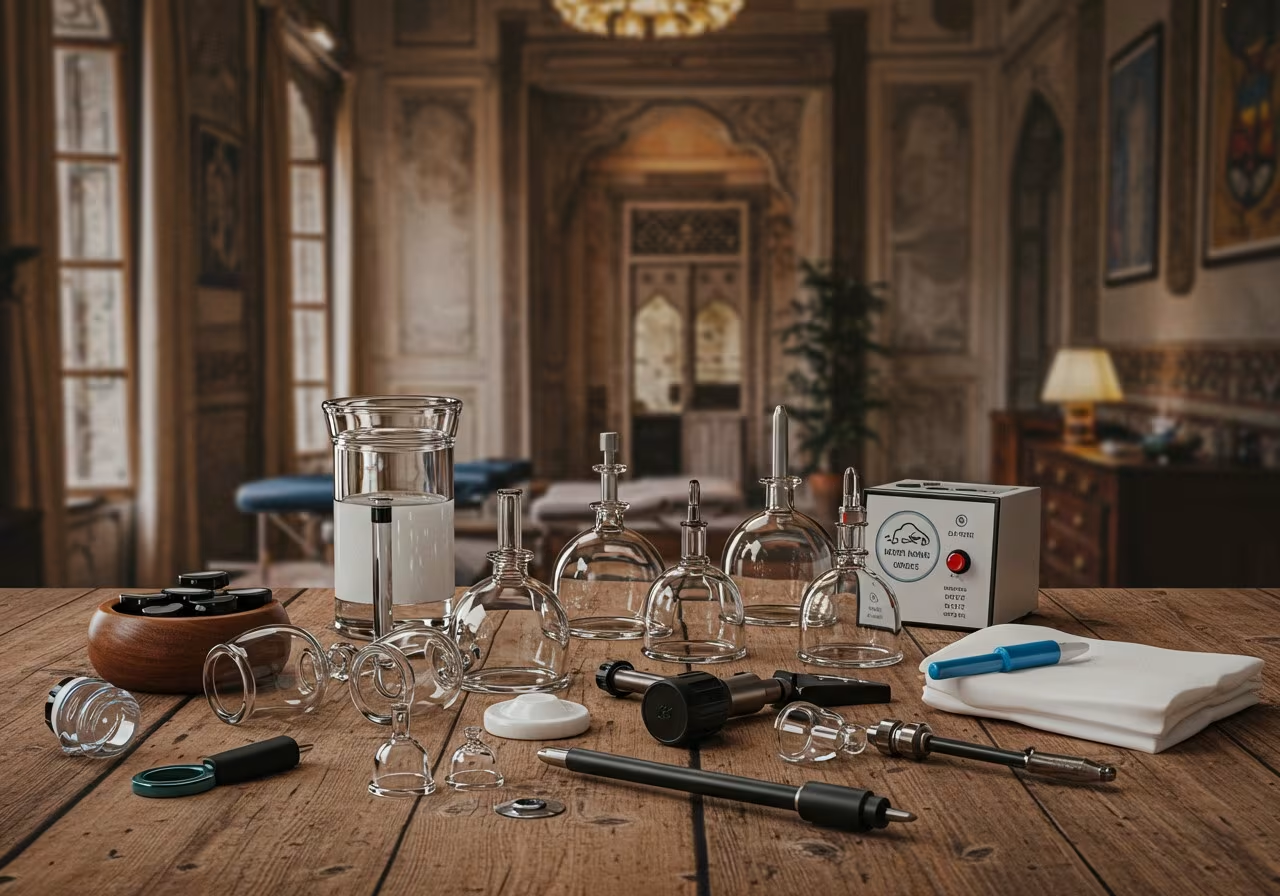
Traditional tools used for Hijama therapy in Kolkata centers
Historical Roots
Hijama's origins trace back thousands of years with evidence of its practice in ancient Egyptian, Chinese, and Middle Eastern civilizations. The word "Hijama" comes from the Arabic "hajm," meaning "sucking." In the Indian subcontinent, including Bengal, variations of cupping therapy have been part of traditional medicine systems for centuries.
In Kolkata, the practice has deep historical connections through both Unani and Ayurvedic medical traditions. Colonial-era records mention cupping practices among Bengal's traditional healers, though the contemporary revival of Hijama in Kolkata is largely influenced by its prominence in Islamic prophetic medicine (Tibb an-Nabawi).
The Science Behind Hijama
While traditional explanations of Hijama focus on removing "bad blood" and balancing energies, modern science offers several physiological explanations for its observed benefits:
Increased Blood Circulation
The suction created by cupping dilates blood vessels and increases blood flow to tissues, potentially promoting healing and reducing inflammation.
Fascial Release
Cupping may help release fascia (connective tissue) adhesions, improving mobility and reducing pain by decreasing tissue restriction.
Neurological Effects
Research suggests cupping stimulates nerves and can trigger the release of endorphins and other neurotransmitters that alleviate pain.
Immune System Response
Studies indicate cupping may activate the immune system and trigger an inflammatory response that aids in healing damaged tissues.
Modern Research
Scientific interest in cupping therapy has grown substantially in recent years. Research published in journals like the Journal of Traditional and Complementary Medicine and Evidence-Based Complementary and Alternative Medicine has documented beneficial effects for conditions including:
- Chronic pain conditions
- Herpes zoster (shingles)
- Facial paralysis
- Cervical spondylosis
- Fibromyalgia
- Hypertension
While more rigorous clinical trials are still needed, the growing body of research is helping establish Hijama's place within integrative medicine approaches available to Kolkata residents.
Benefits of Hijama Therapy
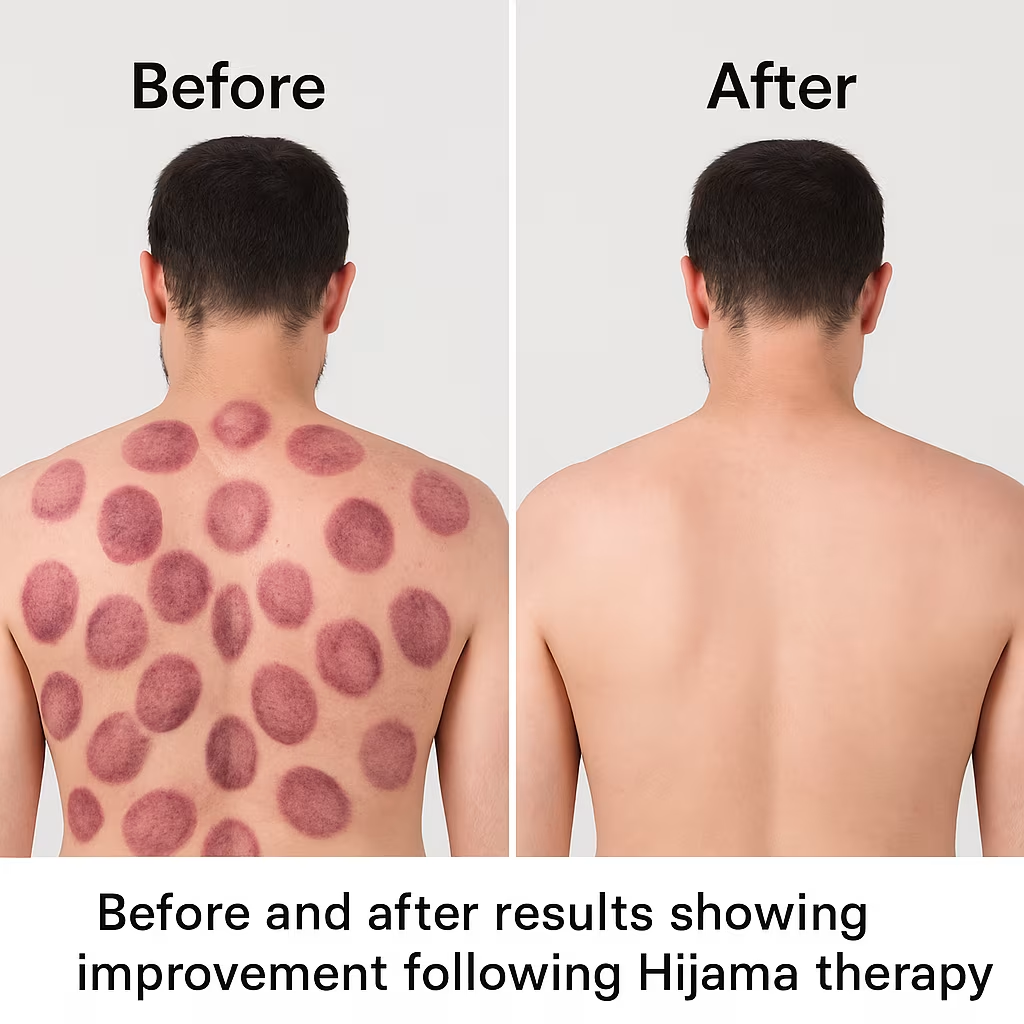
Before and after results showing improvement following Hijama therapy
Patients visiting Hijama centers in Kolkata report a wide range of benefits from regular cupping sessions. While individual experiences vary, the following benefits are commonly reported and supported by emerging research:
Pain Relief
Effective for back pain, neck pain, headaches, and joint discomfort, which are common complaints among Kolkata residents with desk jobs.
Improved Mobility
Helps release muscle tension and fascial restrictions, enhancing range of motion and flexibility for all age groups.
Respiratory Relief
Particularly valuable in Kolkata's urban environment where air quality concerns affect respiratory health.
Circulatory Benefits
Promotes blood flow and may help with hypertension management, a growing concern among Kolkata's urban population.
Immune Support
May enhance immune function, helping the body resist common seasonal illnesses prevalent in Kolkata's climate.
Better Sleep
Many patients report improved sleep quality after Hijama sessions, helping combat the stress of urban living in Kolkata.
Stress Reduction
Helps alleviate anxiety and tension, providing mental relief from the fast-paced lifestyle of the city.
Conditions Commonly Treated with Hijama in Kolkata
- Chronic back and neck pain
- Migraines and tension headaches
- Arthritis and joint inflammation
- Skin conditions including psoriasis
- Respiratory issues like asthma and bronchitis
- Digestive disorders
- High blood pressure
- Anxiety and stress-related conditions
- Fertility issues
- Chronic fatigue and low energy
Types of Cupping Therapy Available in Kolkata
When seeking cupping therapy in Kolkata, you'll find several distinct methods available across different centers. Each technique offers unique benefits and may be recommended based on your specific health concerns:
| Cupping Type | Description | Best For | Availability in Kolkata |
|---|---|---|---|
| Dry Cupping | Uses suction only, without any cuts or bleeding | Muscle tension, pain relief, general wellness | Widely available at most centers |
| Wet Cupping (Hijama) | Involves small superficial incisions followed by cup application to draw out small amounts of blood | Detoxification, chronic conditions, inflammatory disorders | Available at specialized Islamic Hijama centers and some Unani medicine clinics |
| Fire Cupping | Uses fire to create vacuum inside glass cups before application | Deep tissue work, cold conditions, stagnant qi/energy | Available at traditional medicine practitioners and some spa centers |
| Moving Cupping | Cups are moved across lubricated skin creating a massage-like effect | Large muscle groups, fascial release, improving circulation | Available at premium wellness centers and some physiotherapy clinics |
| Magnetic Cupping | Combines cupping with magnetic therapy by placing small magnets inside cups | Pain management, energy balancing | Limited availability at select specialty centers |
Materials Used in Cupping
Different Hijama centers in Kolkata utilize various materials for their cupping equipment, each offering distinct advantages:
Traditional Glass Cups
Benefits: Transparent (allows practitioner to see skin reaction), excellent suction, traditional authenticity
Common at: Traditional Unani and Islamic Hijama centers
Silicone Cups
Benefits: Flexible, easy to apply, various sizes, lower risk of breakage, gentle suction control
Common at: Modern wellness centers, physiotherapy clinics
Plastic Cups with Pump
Benefits: Precise suction control, good for sensitive individuals, hygienic
Common at: Medical spas, integrative clinics
Specialized Cupping Approaches in Kolkata
Several centers in Kolkata have developed unique approaches that blend traditional Hijama with other therapeutic modalities:
- Ayurvedic Cupping: Combines cupping with Ayurvedic principles and herbal oils at select centers in North and South Kolkata
- Cupping with Acupuncture: Offered by Chinese medicine practitioners primarily in central Kolkata and Salt Lake area
- Sports Cupping: Targeted treatment for athletes available at sports medicine facilities and high-end fitness centers
- Facial Cupping: Cosmetic application for facial rejuvenation, available at premium spas and beauty centers
What to Expect During a Hijama Session
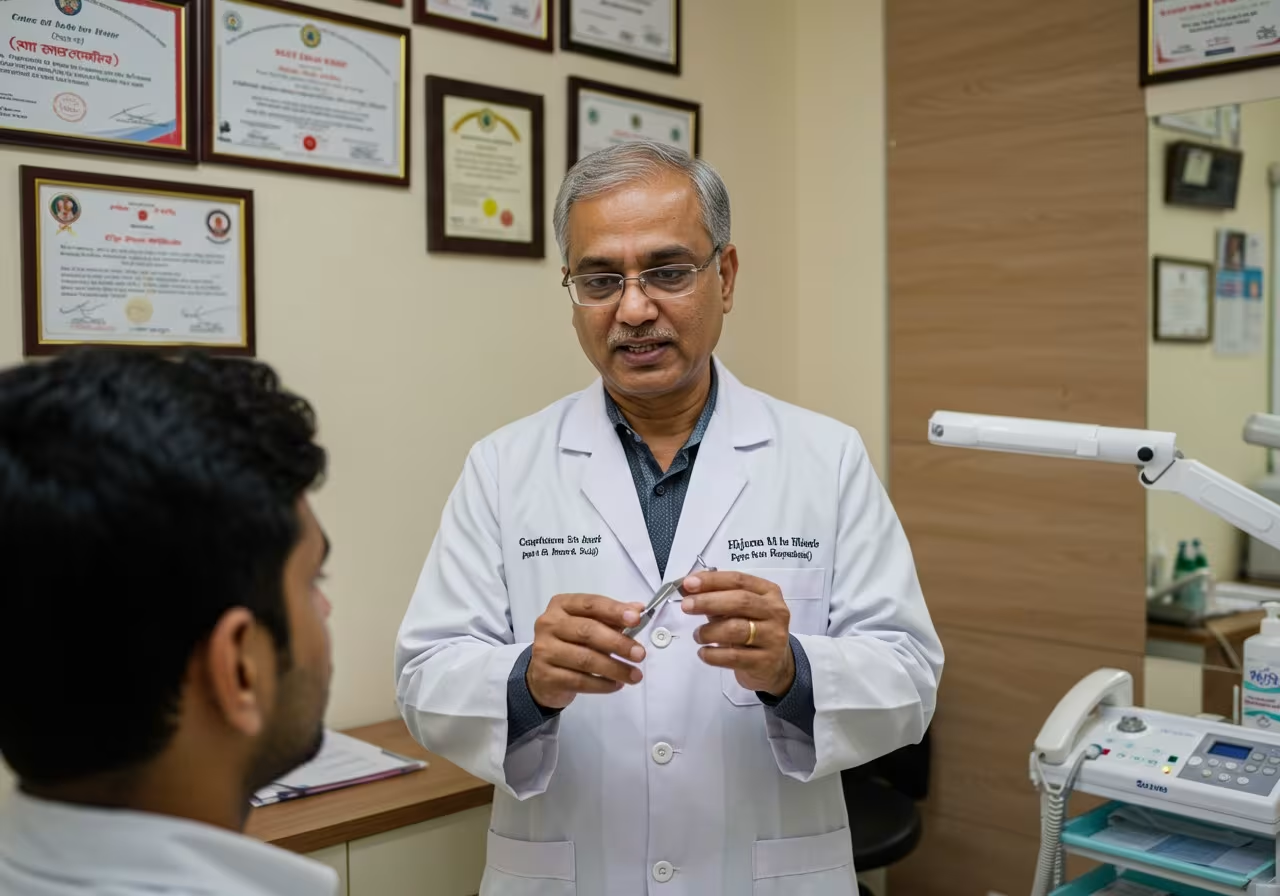
A typical consultation before Hijama therapy session in Kolkata
For first-time visitors to a Hijama center in Kolkata, knowing what to expect can help ease any apprehension. While experiences may vary slightly between centers, here's a typical process you can anticipate:
Before Your Appointment
Preparation Guidelines
Most Kolkata centers will advise you to:
- Eat a light meal 1-2 hours before (avoid coming on an empty stomach)
- Stay well-hydrated in the 24 hours leading up to treatment
- Avoid caffeine and alcohol for at least 24 hours prior
- Wear loose, comfortable clothing that allows easy access to treatment areas
During Your Session
1. Initial Consultation
Your practitioner will discuss your health concerns, medical history, and treatment goals. This typically takes 15-20 minutes at reputable Kolkata centers. For wet Hijama, they may check for contraindications.
2. Preparation
You'll be asked to lie down comfortably, with the treatment area exposed. The practitioner will clean the area with antiseptic solution. In traditional Islamic Hijama centers, the practitioner may recite specific prayers before beginning.
3. Cup Application
The practitioner will create suction in the cups (either using fire, a pump, or manual compression) and place them on specific points on your body. You'll feel a tight pulling sensation as your skin is drawn into the cup.
4. Treatment Duration
Cups typically remain in place for 5-15 minutes, depending on your condition and tolerance. For wet Hijama, the process includes:
- Initial cup application (3-5 minutes)
- Removal of cups
- Small superficial incisions made with sterile blades
- Reapplication of cups to draw out small amounts of blood
- Final removal and cleaning of the area
5. Cup Removal and Aftercare
The practitioner will gently release the suction and remove the cups, then clean and soothe the treated areas. For wet Hijama, antiseptic and bandages may be applied to incision sites.
After Your Session
Common Post-Treatment Effects
After receiving cupping therapy in Kolkata, you may experience:
- Skin Marks: Circular marks or bruises that typically fade within 3-10 days
- Lightheadedness: Especially after wet Hijama, which is why rest is recommended
- Relaxation or Fatigue: Many people feel deeply relaxed or temporarily tired
- Thirst: It's normal to feel thirsty as your body rehydrates
- Immediate Relief: Some experience immediate relief from pain or symptoms
- Delayed Response: Others notice improvements in the days following treatment
Post-Treatment Care Recommendations
Practitioners at Hijama centers in Kolkata typically advise:
- Drink plenty of water for the next 24-48 hours
- Avoid showering for 4-6 hours (recommendations vary by center)
- Avoid strenuous exercise for 24 hours
- Keep the treatment area clean and covered if you had wet Hijama
- Avoid very spicy foods, cold drinks, and excessive caffeine for 24 hours
- Get adequate rest to allow your body to heal and integrate the treatment
Best Hijama Centers in Kolkata
Kolkata offers several reputable centers providing authentic Hijama services. Here's a curated selection of established Hijama centers in Kolkata known for their quality of service, practitioner expertise, and hygiene standards:
Dr Biswanath Chowdhury | Call - +917003647770
Barasat, Naihati
Biswanath Chowdhury is a highly experienced physiotherapist with over 25 years of expertise in treating musculoskeletal conditions. Renowned for his compassionate care and deep knowledge, he is also recognized for providing some of the best cupping therapy services in the region. His holistic approach combines modern physiotherapy techniques with traditional Hijama (cupping), offering patients safe, effective, and personalized healing experiences.
Price Range: ₹600 - ₹2,500 per session
Integrative Cupping Therapy Center
Salt Lake, Sector V, Kolkata
Modern wellness center combining traditional cupping with physiotherapy and acupuncture. Popular among professionals for stress and lifestyle disorder management.
Price Range: ₹1,500 - ₹3,000 per session
Unani Hijama Clinic
Park Circus, Kolkata
Family-run clinic with generations of experience in Unani medicine. Known for traditional approaches and authentic wet Hijama practices with personalized care.
Price Range: ₹800 - ₹1,800 per session
Modern Cupping & Wellness Spa
Ballygunge, Kolkata
Luxury wellness center offering cupping as part of comprehensive spa treatments. Features silicone cupping and specializes in facial and aesthetic cupping applications.
Price Range: ₹2,000 - ₹4,500 per session
How to Choose the Right Hijama Center in Kolkata
When selecting a center for cupping therapy in Kolkata, consider these important factors:
Practitioner Qualifications
Look for centers with certified practitioners who have formal training in Hijama or relevant medical backgrounds (Unani practitioners, physiotherapists, etc.). Ask about their experience and training background.
Hygiene Standards
Particularly important for wet Hijama. The center should use disposable cups or proper sterilization procedures, disposable blades, gloves, and maintain a clean clinical environment.
Client Reviews
Check online reviews, ask for testimonials, or request to speak with previous clients if possible. Word-of-mouth recommendations are particularly valuable in Kolkata's close-knit communities.
Consultation Process
A reputable center will conduct a thorough health assessment before treatment, explain the procedure, discuss potential outcomes, and obtain informed consent.
Transparent Pricing
Reputable centers provide clear information about cupping therapy prices in Kolkata, with no hidden costs or pressure to purchase packages.
Pricing Guide for Cupping Therapy in Kolkata
The cost of cupping therapy in Kolkata varies based on several factors including the type of cupping, the center's location, practitioner expertise, and whether it's standalone or part of a comprehensive treatment plan.
Average Price Ranges
| Type of Service | Budget Centers | Mid-Range Centers | Premium Centers |
|---|---|---|---|
| Dry Cupping (Basic) | ₹600 - ₹1,000 | ₹1,000 - ₹1,800 | ₹1,800 - ₹3,000 |
| Wet Hijama (Standard) | ₹800 - ₹1,200 | ₹1,200 - ₹2,000 | ₹2,000 - ₹3,500 |
| Moving Cupping | ₹700 - ₹1,200 | ₹1,200 - ₹2,000 | ₹2,000 - ₹3,200 |
| Fire Cupping | ₹800 - ₹1,300 | ₹1,300 - ₹2,200 | ₹2,200 - ₹3,500 |
| Facial Cupping | ₹1,000 - ₹1,500 | ₹1,500 - ₹2,500 | ₹2,500 - ₹4,500 |
| Specialized Combination Treatments | ₹1,200 - ₹2,000 | ₹2,000 - ₹3,500 | ₹3,500 - ₹6,000+ |
Factors Affecting Price
Location in Kolkata
- Centers in Park Street, Ballygunge, and Salt Lake areas typically charge premium rates
- Centers in North Kolkata, Behala, or suburban areas often offer more affordable options
- Traditional centers in areas like Park Circus may provide authentic treatments at moderate prices
Practitioner Expertise
- Treatments by certified international practitioners command higher fees
- Centers with practitioners holding medical qualifications typically charge more
- Traditional family practitioners with generational experience may offer better value
Facility Type
- Luxury wellness centers and medical spas charge premium rates but offer enhanced amenities
- Clinical settings provide focused treatment at moderate prices
- Traditional Unani or Ayurvedic centers often provide more affordable options
Treatment Duration
- Basic sessions (30-45 minutes) are more affordable
- Comprehensive sessions with consultation (60-90 minutes) cost more
- Follow-up sessions are typically offered at reduced rates
Package Deals
Many Hijama centers in Kolkata offer package deals that can provide better value for those requiring multiple sessions:
3-Session Packages
Usually 10-15% discount off regular per-session price
Example: ₹3,000 - ₹5,000 for three dry cupping sessions
5-Session Packages
Typically 15-20% discount off regular pricing
Example: ₹4,500 - ₹8,000 for five wet Hijama sessions
Combination Packages
Combined treatments (e.g., cupping + massage or acupuncture)
Example: ₹2,500 - ₹4,500 for cupping with complementary therapy
Pricing Tips for Kolkata Residents
- Always confirm total costs before treatment; ask about any additional charges
- Some centers offer discounts for senior citizens, students, or first-time clients
- Seasonal promotions are common, especially during winter months when Hijama is traditionally recommended
- Consider value rather than just price—the cheapest option isn't always the best
- Medical insurance generally doesn't cover Hijama in Kolkata, though some wellness plans may offer partial reimbursement
Safety and Precautions
While Hijama in Kolkata is generally safe when performed by trained practitioners, it's important to understand potential risks and contraindications:
When to Avoid Hijama
Hijama may not be suitable for everyone. Avoid cupping if you have:
- Bleeding disorders or are taking blood thinners
- Active skin conditions, infections, or inflammation at treatment sites
- Deep vein thrombosis or history of blood clots
- Severe anemia
- Active cancer without medical clearance
- Unstable cardiac conditions
- High fever
- Pregnancy (especially first trimester and on abdominal/lower back areas)
Potential Side Effects
Common and Normal
- Circular marks/bruising: Normal and typically fade within 3-10 days
- Mild soreness: May occur at treatment sites
- Skin redness: Temporary response to increased blood flow
- Drowsiness: Common response after treatment
Uncommon but Possible
- Skin burns: Possible with fire cupping if improperly done
- Infection: Risk primarily with wet Hijama if hygiene standards are poor
- Excessive bruising: May occur with overly strong suction
- Dizziness or nausea: Particularly with first-time treatments
Ensuring Safe Treatment
Choose Qualified Practitioners
Ensure your practitioner has proper training, certification, and experience. In Kolkata, look for practitioners with credentials from recognized institutions or traditional medicine backgrounds.
Complete Health Disclosure
Always provide your complete medical history and current conditions to your practitioner. Mention any medications you're taking, especially blood thinners or immunosuppressants.
Verify Hygiene Practices
For wet Hijama especially, ensure the center uses:
- Disposable sterile blades
- New cups for each client or properly sterilized equipment
- Gloves and proper hand hygiene
- Clean treatment surfaces
Start Gradually
If you're new to Hijama, consider starting with a milder form like dry cupping before attempting wet Hijama. Request lighter suction for your first session to see how your body responds.
When to Seek Medical Attention
Contact a medical professional if you experience any of these symptoms after cupping therapy in Kolkata:
- Fever or signs of infection (increased warmth, swelling, pus)
- Severe pain that worsens after treatment
- Skin blisters or burns
- Persistent dizziness or unusual weakness
- Excessive bleeding at incision sites (for wet Hijama)
- Allergic reactions (rare but possible)
FAQs about Hijama in Kolkata
How often should I get Hijama therapy?
The frequency depends on your specific health goals and condition. For general wellness, most practitioners in Kolkata recommend sessions every 1-3 months. For specific health conditions, your practitioner may recommend more frequent sessions initially (e.g., weekly or bi-weekly), followed by a maintenance schedule. Traditional Islamic Hijama often follows lunar calendar timings, with the 17th, 19th, and 21st days of the lunar month considered ideal.
What's the difference between wet and dry Hijama?
Dry Hijama (or dry cupping) involves only the application of suction cups to the skin without any incisions. It primarily works by increasing blood flow to tissues and releasing muscle tension. Wet Hijama involves making small superficial incisions on the skin after initial cupping, then reapplying cups to draw out small amounts of blood. Traditional practitioners believe wet Hijama provides deeper detoxification and is more effective for certain chronic conditions.
Is Hijama painful?
Most people describe Hijama as creating a sensation of pressure or pulling rather than pain. Dry cupping typically causes minimal discomfort. Wet Hijama involves small incisions that may cause momentary discomfort similar to a quick pinch. Most Kolkata practitioners use techniques to minimize pain, including applying appropriate pressure based on individual sensitivity and treatment area.
How much does Hijama cost in Kolkata?
Cupping therapy prices in Kolkata vary widely based on the center, practitioner expertise, and type of treatment. Basic dry cupping typically ranges from ₹800-₹2,000 per session, while wet Hijama generally costs between ₹1,000-₹3,000. Premium centers with additional amenities or specialized techniques may charge ₹3,000-₹5,000 or more. Many centers offer package discounts for multiple sessions.
Are the cupping marks dangerous?
The circular marks left after cupping (sometimes called "sha" or "bruising") are normal and not harmful. They result from blood being drawn to the surface of the skin and typically fade within 3-10 days. The color and intensity of marks can vary based on the person's circulation, the condition being treated, and the suction strength. Darker marks are not necessarily better or indicative of more effective treatment.
Can I get Hijama if I have a medical condition?
If you have existing medical conditions, you should consult with both your doctor and the Hijama practitioner before treatment. Certain conditions (such as bleeding disorders, skin infections, or pregnancy) may contraindicate Hijama or require modified approaches. Reputable Hijama centers in Kolkata will conduct a thorough health assessment and may request medical clearance for certain conditions.
What should I eat before and after Hijama?
Most practitioners recommend eating a light meal 1-2 hours before treatment (avoid coming with an empty stomach). After treatment, it's advisable to: drink plenty of water, avoid very cold foods and beverages, consume easily digestible meals, and avoid alcohol and excessive caffeine for 24 hours. Some traditional practitioners in Kolkata may provide specific dietary recommendations based on Unani or Ayurvedic principles.
Can Hijama help with weight loss?
While some centers in Kolkata advertise Hijama for weight loss, scientific evidence for this specific benefit is limited. Hijama may indirectly support weight management by improving metabolism, reducing water retention, alleviating stress (which can contribute to emotional eating), and improving energy levels that may facilitate more active lifestyles. However, it should not be considered a primary weight loss method but rather a complementary approach alongside proper diet and exercise.
What areas of the body are typically treated with Hijama in Kolkata centers?
Common treatment areas include the upper back (between shoulder blades), lower back, shoulders, neck, and the back of the knees. The specific points vary based on the condition being treated. Facial cupping uses smaller cups and gentler techniques. Some areas are generally avoided, such as bony prominences, varicose veins, areas with skin damage, and certain points during pregnancy. Most Hijama centers in Kolkata follow traditional point systems based on either Islamic Tibb, Traditional Chinese Medicine, or Unani medicine principles.
Conclusion
Hijama therapy offers Kolkata residents a valuable approach to health and wellness that bridges ancient wisdom with contemporary health needs. As a city that honors tradition while embracing modernity, Kolkata provides numerous options for those interested in experiencing the potential benefits of this time-tested healing practice.
Whether you're seeking relief from chronic pain, support for specific health concerns, or simply exploring holistic wellness approaches, Hijama in Kolkata can be a meaningful addition to your health routine when approached with proper knowledge and reasonable expectations.
The key to a positive experience lies in choosing qualified practitioners who maintain high hygiene standards, clearly understand your health needs, and approach treatment with both traditional knowledge and modern medical awareness. With proper research and the guidance provided in this article, you're now better equipped to make informed choices about cupping therapy in Kolkata.
Remember that while Hijama can offer significant benefits, it works best as part of a holistic approach to health that includes proper nutrition, regular physical activity, stress management, and appropriate medical care when needed. Consider consulting with healthcare providers before beginning Hijama, especially if you have existing health conditions or take medications.
As interest in traditional healing practices continues to grow in Kolkata, we can expect to see further integration of Hijama with modern healthcare approaches, potentially creating more evidence-based, regulated, and accessible options for residents seeking this beneficial therapy.
Key Takeaways
- Hijama (cupping therapy) offers potential benefits for pain relief, circulation, respiratory conditions, and stress reduction
- Kolkata offers various types of cupping including dry, wet, fire, and moving cupping across different price ranges
- Prices typically range from ₹600-₹4,500 depending on the type, location, and practitioner's expertise
- Always choose centers with qualified practitioners and strict hygiene standards, especially for wet Hijama
- Understand potential contraindications and consult healthcare providers if you have existing medical conditions
- Follow proper preparation and aftercare guidelines to maximize benefits and minimize side effects
References
- Al-Bedah, A., et. al. (2019). The medical perspective of cupping therapy: Effects and mechanisms of action. Journal of Traditional and Complementary Medicine, 9(2), 90-97.
- Cao, H., et. al. (2015). An updated review of the efficacy of cupping therapy. PLoS One, 10(4), e0122121.
- Qureshi, N.A., et. al. (2017). History of cupping (Hijama): A narrative review of literature. Journal of Integrative Medicine, 15(3), 172-181.
- Chi, L.M., et. al. (2016). The effectiveness of cupping therapy on chronic neck and shoulder pain: A systematic review and meta-analysis. Evidence-Based Complementary and Alternative Medicine, 2016, 7358918.
- Rozenfeld, E., & Kalichman, L. (2016). New is the well-forgotten old: The use of dry cupping in musculoskeletal medicine. Journal of Bodywork and Movement Therapies, 20(1), 173-178.
- Nimrouzi, M., et. al. (2014). Hijama (cupping) for the management of hypertension. Journal of Traditional and Complementary Medicine, 5(1), 20-23.
